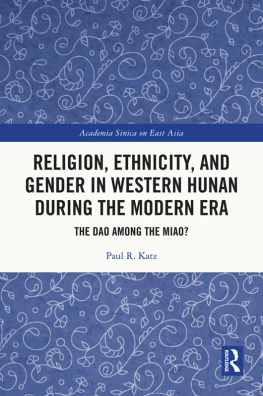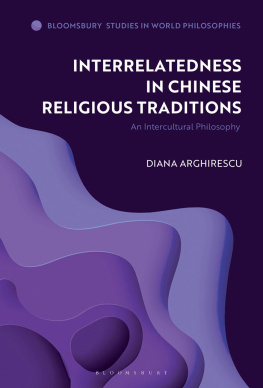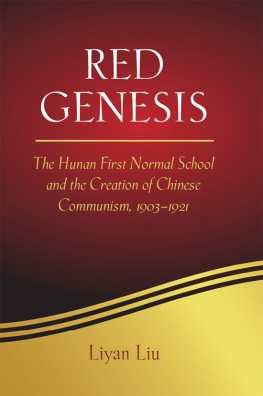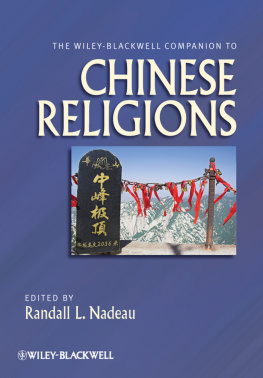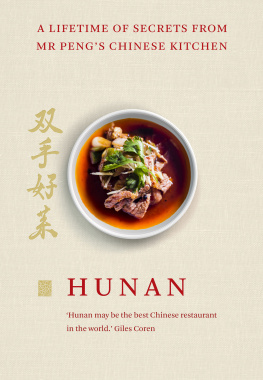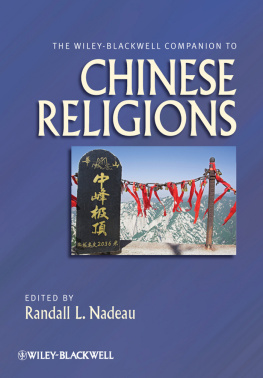Religion, Ethnicity, and Gender in Western Hunan during the Modern Era
This book explores how beliefs and practices have shaped the interactions between different ethnic groups in Western Hunan, as well as considering how religious life has adapted to the challenges of modern Chinese history.
Combining historical and ethnographic methodologies, chapters in this book are structured around changes that occurred during the interaction between Miao ritual traditions and religions, such as Daoism, with particular focus on the commonalities and differences seen between Western Hunan and other areas of Southwest China. In addition, investigation is made into how gender and ethnicity have shaped such processes, and what these phenomena can teach about larger questions of modern Chinese history. As such, this study transcends existing scholarship on Western Hunan which has stressed the impact of state policies and elite agendas by focusing instead on the roles played by ritual specialists. Such findings call into question conventional wisdom about the standardization of Chinese culture, as well as the integration of local society into the state by means of written texts.
Religion, Ethnicity, and Gender in Western Hunan during the Modern Era will prove valuable to students and scholars of history, ethnography, anthropology, ethnic studies, and Asian studies more broadly.
Paul R. Katz is Distinguished Research Fellow at the Institute of Modern History, Academia Sinica, and Program Director of the Chiang Ching-kuo Foundation for International Scholarly Exchange. His research centers on modern Chinese religious life, with his most recent monograph (Religion in China and its Modern Fate) published in early 2014.
Academia Sinica on East Asia

Edited by: Dr. Chin-Shing Huang, Vice-President, Academia Sinica, Taiwan
Academia Sinica was founded in 1928 in Nanjing, China. Over the next decade, ten institutes were founded, including three institutes in the humanities and social sciences. Researchers continued their work through the War of Resistance against Japan (1936-1945) and the civil war (1945-1949), and in 1948 Academia Sinica followed the government of the Republic of China to Taiwan. Only two of its institutes, the Institute of History and Philology and the Institute of Mathematics, were initially reestablished in Taiwan. However, over the following years Academia Sinica developed into a world-class research institution with 31 institutes and research centers divided among three divisions: Mathematics and Physical Sciences, Life Sciences, and Humanities and Social Sciences.
The Division of Humanities and Social Sciences now consists of eleven institutes and a research center. Its scholars conduct research in the areas of archeology, history, literature, linguistics, philology, philosophy, anthropology, economics, sociology, political science, and law, as well as conducting interdisciplinary research.
The publication series Academia Sinica on East Asia features monographs by scholars in the humanities and social sciences at Academia Sinica.
Published in association with Academia Sinica, Taiwan
Landscape Change and Resource Utilization in East Asia
Perspectives from Environmental History
Edited by Tsui-jung Liu, Andrea Janku and David Pietz
Perspectives on Environmental History in East Asia
Changes in the Land, Water, and Air
Edited by Tsui-jung Liu and Micah Muscolino
Religion, Ethnicity, and Gender in Western Hunan during the Modern Era
The Dao among the Miao?
Paul R. Katz
For more information about this series, please visit: https://www.routledge.com/asianstudies/series/AS00
First published 2022
by Routledge
2 Park Square, Milton Park, Abingdon, Oxon OX14 4RN
and by Routledge
605 Third Avenue, New York, NY 10158
Routledge is an imprint of the Taylor & Francis Group, an informa business
2022 Paul R. Katz
The right of Paul R. Katz to be identified as author of this work has been asserted by him in accordance with sections 77 and 78 of the Copyright, Designs and Patents Act 1988.
All rights reserved. No part of this book may be reprinted or reproduced or utilised in any form or by any electronic, mechanical, or other means, now known or hereafter invented, including photocopying and recording, or in any information storage or retrieval system, without permission in writing from the publishers.
Trademark notice: Product or corporate names may be trademarks or registered trademarks, and are used only for identification and explanation without intent to infringe.
British Library Cataloguing-in-Publication Data
A catalogue record for this book is available from the British Library
Library of Congress Cataloging-in-Publication Data
Names: Katz, Paul R., 1961- author.
Title: Religion, ethnicity, and gender in western Hunan during the modern era : the Dao among the Miao? / Paul R. Katz.
Description: Abingdon, Oxon; New York, NY : Routledge, 2022. | Series: Academia Sinica series | Includes bibliographical references and index.
Identifiers: LCCN 2021011304 | ISBN 9780367184681 (hbk) | ISBN 9781032066448 (pbk) | ISBN 9780429196478 (ebk)
Subjects: LCSH: Hunan Sheng (China)Religious life and customs. | Hmong (Asian people)ChinaHunan ShengReligion. | TaoismChinaHunan Sheng. | TaoismInfluence. | Hunan Sheng (China)Civilization. | China, SouthwestCivilization.
Classification: LCC BL1945.H78 K38 2022 | DDC 299.5/140951215dc23
LC record available at https://lccn.loc.gov/2021011304
ISBN: [978-0-367-18468-1] (hbk)
ISBN: [978-1-032-06644-8] (pbk)
ISBN: [978-0-429-19647-8] (ebk)
DOI: 10.4324/9780429196478
Typeset in Times
by KnowledgeWorks Global Ltd.
Contents
- Western Hunan: An overview
- Temple cults
- Ritual specialists
- Ritual violence and the judicial continuum
- Female mediums and rites of resistance
- The Incense Dancing festival
- Repaying a Nuo Vow
- Half Title
- 1 Western Hunan: An overview
- 2 Temple cults
- 3 Ritual specialists
- 4 Ritual violence and the judicial continuum
- 5 Female mediums and rites of resistance
- 6 The Incense Dancing festival
- 7 Repaying a Nuo Vow
- 2.1 Heavenly Kings temple in Jishou (formerly Yaxi). Photo by He Xi. Used with permission
- 2.2 Matron of the Umbrella. Photo by Kang Shih-yu. Used with permission
- 2.3 Miao shrine. Photo by He Xi. Used with permission
- 2.4 Miao master performing rites to mountain deity. Photo by He Xi. Used with permission
- 2.5 Village sacred geography portrayed by Miao master. Photo by He Xi. Used with permission
- 3.1 Guest master. Courtesy of the Institute of History and Philology, Academia Sinica. Used with permission
- 3.2 Guest master performing rites in local temple. Photo by Xie Xiaohui. Used with permission
- 3.3 Miao master. Courtesy of the Institute of History and Philology, Academia Sinica. Used with permission
- 3.4 Oxen sacrifice. Photo by Wu Pei-Hua. Used with permission
- 3.5 Miao female medium. Photo by He Xi. Used with permission
- 6.1 Guest master reading memorial during Incense Dancing festival. Photo by Kang Shih-yu. Used with permission

